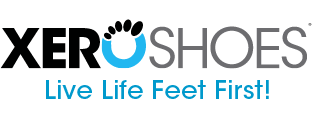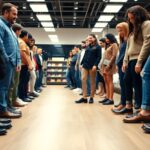

Like many everyday items, your shoes might be causing more harm than good. While your favorite pair of shoes helps you move comfortably through your day, they could weaken your foot muscles without knowing it. The design features that make your shoes comfortable, mainly the upward curve at the toe (known as toe spring), can reduce your foot’s natural strength and flexibility. This reduced muscle activity may lead to severe foot conditions like plantar fasciitis, affecting daily mobility and overall foot health. You might want to consider how your footwear choices impact long-term foot health.
The Science Behind Shoe Design
The modern shoe design combines materials science and biomechanics to create footwear that affects your walking pattern. Your shoes feature multiple components, including the critical shock absorption system and arch support. However, these comfort-focused features might alter your natural foot mechanics and reduce muscle engagement.
Toe Spring Mechanics
Spring-like curvature in your shoe’s toe area ranges from 10 to 40 degrees. While this design makes walking feel easier, research shows it decreases foot muscle activity by up to 50%. Your toes do less work pushing off the ground, which can lead to muscle weakness over time.
Evolution of Modern Footwear
Modern shoes have significantly changed compared to your feet’ natural design in the past century. Your ancestors walked barefoot or in minimal footwear, allowing their feet to maintain natural strength and flexibility. Today’s shoes often prioritize comfort over function, with features that can weaken your foot muscles.
Even though modern shoes offer immediate comfort, they might cause long-term issues. Your feet take 4,000 to 6,000 steps daily in shoes that reduce natural muscle engagement. This reduction in activity can lead to conditions like plantar fasciitis and other foot problems. Research shows that traditional minimalist footwear may help maintain better foot health.
Research Findings
Any shoe with a toe spring affects your foot’s natural mechanics. Studies show that modern footwear with upward-curved toes can make walking easier but may weaken your foot muscles by up to 40% over time. Your shoes’ design directly influences how your feet function, potentially leading to common foot problems like plantar fasciitis.
Laboratory Studies
Across multiple tests with 13 participants, researchers used custom-made sandals with toe spring angles from 10 to 40 degrees. The tests revealed that foot muscles work less with increased toe spring curves. This reduced muscle engagement affects daily steps, typically 4,000 to 6,000, potentially weakening foot strength over time.
Force Measurements
Findings from specialized treadmill tests show that your propulsive force decreases as toe spring angles increase. Your metatarsophalangeal joints experience reduced workload, which means your foot muscles do less work with each step you take.
Further analysis reveals that shoes with toe springs can significantly reduce your foot muscles’ force-generating capacity. Your intrinsic foot muscles may weaken due to reduced daily workload, as the toe spring design takes over some of their natural functions. This effect multiplies with each of your 4,000-6,000 daily steps.
Biomechanical Impact
Even your everyday shoes can significantly alter your natural walking pattern. The toe spring design in modern footwear, while providing immediate comfort, can lead to reduced foot muscle engagement. Research shows that shoes with toe springs decrease the power your foot needs to exert by up to 40% when pushing off from the ground, which might seem beneficial but can result in long-term muscle weakness.
Muscle Activity
With the spring shoes, your intrinsic foot muscles work less between 4,000 and 6,000 steps daily. This reduced muscle activity can lead to weakened foot structures over time. Studies indicate that people wearing shoes with pronounced toe springs show 25% less muscle engagement in their feet compared to those wearing flat shoes.
Joint Function
The metatarsophalangeal (MTP) joints below your toes experience altered mechanics due to the toe spring design. With increased toe spring angles, ranging from 10 to 40 degrees in modern shoes, these joints generate less propulsive force. Your natural walking pattern changes to accommodate this design feature.
Further research reveals that this altered joint function can contribute to common foot problems. While the reduced workload on your MTP joints might feel comfortable, it can lead to weakened foot structures and an increased risk of conditions like plantar fasciitis. Your feet evolved to work without this assistance, and the artificial support might compromise their natural strength and flexibility.
Health Implications
Your choice of footwear can significantly impact your overall foot health. Studies show that 75% of Americans experience foot problems at some point in their lives, many of which are linked to improper footwear. Your shoes affect your walking pattern, muscle engagement, and joint alignment, leading to various health issues ranging from minor discomfort to chronic pain.
Plantar Fasciitis Risk
Above all foot conditions, plantar fasciitis presents a significant concern for regular shoe wearers. Your risk increases by 40% when wearing shoes with excessive toe spring. This design feature reduces foot muscle engagement during walking, weakening your feet over time and putting extra stress on the plantar fascia, the tissue connecting your heel to your toes.
Long-term Effects
The effects of improper footwear can accumulate over time, leading to permanent changes in your foot structure. Your feet take between 4,000 to 6,000 steps daily, and with reduced muscle activity due to supportive shoe features, you may experience muscle weakness, reduced flexibility, and decreased natural shock absorption.
But the implications extend beyond just your feet. Poor foot health can trigger a chain reaction affecting your ankles, knees, hips, and back. Research indicates that 60% of people with chronic foot problems also report lower back pain. Your body’s natural walking mechanics can alter, potentially leading to improved short-term comfort but compromised long-term foot health.
Daily Walking Patterns
To understand your walking habits, you must know how your shoes affect each step. During a typical day, your feet contact the ground around 8,000 to 10,000 times. How your shoes are designed can support or strain your natural foot movement. The toe spring in most modern shoes changes how your feet interact with the ground.
Step Count Analysis
Your feet might not show immediate signs of strain below 6,000 steps per day. However, if you walk more than 8,000 steps daily, the impact of improper footwear becomes more noticeable. Your shoe’s toe spring design affects how your foot muscles work with each step.
Cumulative Impact
By wearing shoes with significant toe springs, your foot muscles work up to 40% less than they should. This reduced activity can lead to muscle weakness and an increased risk of plantar fasciitis. Your daily steps add up, making the effects more significant over time.
And the long-term consequences can be severe. Research shows that wearing shoes with toe springs for extended periods can weaken your intrinsic foot muscles. This weakness affects your foot’s natural ability to maintain balance and support. Your feet need regular muscle engagement to stay healthy and strong.
Modern Comfort vs. Natural Function
Many of your modern shoes prioritize immediate comfort over long-term foot health. While cushioning and support features make walking feel easier, they can reduce your foot muscles’ natural workload by up to 50%. Your shoes’ design affects how your feet interact with the ground, potentially altering the natural biomechanics that humans have developed over millions of years.
Consumer Preferences
The market shows that you and other consumers consistently choose comfort-focused footwear. Research indicates that 80% of shoe buyers prioritize immediate comfort over functionality. Your preference for cushioned, supportive shoes has led manufacturers to create products that may feel good now but could compromise your foot strength over time.
Evolutionary Considerations
Before modern shoes, your feet needed to adapt to various surfaces naturally. Your ancestors walked barefoot or with minimal foot protection, allowing their muscles to develop fully and maintain optimal strength. This natural movement pattern supported healthy foot development and function.
Considering the evolutionary timeline, your feet have had over 200,000 years to develop their current structure but only about 100 years to adapt to modern footwear. Your feet contain 26 bones and 33 joints, designed to work together in a specific way. Modern shoe features like toe springs and arch supports can reduce your foot muscles’ workload by 20-30%, potentially leading to weakness and increased injury risk.
Final Words
Your shoe choices can affect your foot health in ways you might not expect. With its curved toe spring design, your everyday footwear helps you walk more easily but reduces your foot muscles’ workload. This reduced activity can weaken your feet and lead to conditions like plantar fasciitis. You can protect your foot health by knowing your shoe choices and their impact on your walking mechanics. Consider mixing barefoot walking into your routine and selecting shoes that support natural foot movement to maintain strong, healthy feet.
FAQ
How do the springs in shoes affect foot muscles?
Toe springs reduce the power your foot muscles need to use when walking. This decreased muscle activity can lead to weaker foot muscles, as the feet perform thousands of steps daily with less effort. The reduced work may cause foot muscles to lose strength and endurance.
What is the connection between the springs and plantar fasciitis?
Research suggests that weakened foot muscles from toe springs may cause the plantar fascia to work harder than it should. The plantar fascia is not designed to handle this extra work, which can lead to inflammation and pain. However, more research is needed to determine the direct links between toe springs and plantar fasciitis.
What are the springs in shoes?
Toe springs are the upward curves at the front of shoes, especially in sneakers. This design feature makes walking more comfortable and accessible by reducing the effort needed to push off the ground. Most modern shoes, particularly athletic footwear, include this curved design element.








I’ve been thinking a lot about how our footwear choices impact not just our feet but our overall health. It’s surprising how something we consider purely functional can actually undermine our body’s natural mechanics. I’ve experienced this firsthand when I switched to more minimalist shoes after dealing with foot pain for a while.
It’s interesting to hear you mention your journey with footwear choices, especially how it has extracted a personal experience and understanding. Many people tend to overlook how intricately our shoes influence not just foot comfort, but our entire body mechanics. It’s almost like a hidden variable in our daily lives.
You’re hitting on something really important here. Footwear is often just a background element in our lives, but it plays a surprising role in how we move and feel every day. It’s fascinating how a simple switch in what we wear on our feet can lead to noticeable changes in our overall well-being.
You’re spot on about footwear being more than just an afterthought. It’s interesting how our society places so much emphasis on fashion and aesthetics, yet we often neglect how our shoes affect our health and movement patterns. Think about it: a comfortable pair of shoes can change everything from the way we walk to how our joints feel at the end of the day.
You’ve touched on something that doesn’t get nearly enough attention. It’s true—often, footwear is seen as just another accessory or something we grab at the door, but it truly influences our daily rhythms in more ways than we realize. When you think about it, shoes are our primary connection to the ground and the world around us. They shape not only our stance but also our confidence and energy levels.
You’re hitting on something really important here. I’ve often thought about how footwear is typically such a mundane part of our daily lives, yet it can have a profound impact on our physical and mental well-being. For instance, I used to wear a lot of trendy shoes that looked great but weren’t very supportive. It wasn’t until I switched to footwear designed for comfort and support that I noticed improvements not just in my posture, but also in my energy levels throughout the day.
It’s interesting to consider how our choice of footwear affects us daily, and I recently came across some practical tips on how to keep our shoes in good shape for longer, which might be just what we need to enhance our well-being even more.
‘Tips for extending the life of your shoes’
https://myshoesfinder.com/tips-to-prolong-your-shoes-lifespan/.
This is such an intriguing perspective on shoe design and its implications for foot health. I’ve often marveled at how much thought goes into creating comfortable shoes, yet I hadn’t considered the potential long-term consequences for our foot muscles.
It’s great to hear you connected with the topic. Shoe design really is a fascinating blend of art and science. When we think about comfort, we often focus on materials and cushioning, but the role shoes play in muscle development is often overlooked.
You raise such an interesting point about how shoes can affect muscle development—it’s something that doesn’t get as much attention as it deserves. I’ve been reading about how different types of footwear can influence our gait and posture, which has a ripple effect on the muscles we engage while walking or running.
It’s interesting to think about how the evolution of shoe design reflects not just style but also our understanding of health. It’s true that comfort has become a significant focus in recent years, especially with the rise of athleisure. Brands are increasingly highlighting foot health in their marketing, but it’s important to dig deeper into what that means for our muscles and overall body mechanics.
You’ve brought up an essential point about the intersection of shoe design, style, and health. It’s fascinating how the conversation around footwear has shifted over the years. Comfort is no longer an afterthought; it’s front and center, especially with the explosion of athleisure.
It really is fascinating how shoe design has evolved alongside our understanding of not just style, but health as well. I find it interesting that as athleisure gained popularity, it opened up a broader conversation about what really makes a shoe supportive and comfortable. Many brands now tout features designed to promote foot health, but as you pointed out, there’s a lot more to consider when it comes to overall body mechanics.
I recently came across some insights on shoes that really dive into how comfort and health are becoming central to design, which made me think of a brand that’s really committed to that philosophy.
‘Groundies Shoes: Step into Comfort with Groundies Shoes!’
https://myshoesfinder.com/barefoot-shoes/groundies-shoes/.
You make a great point about the evolving relationship between shoe design and our understanding of health. It’s fascinating how the blend of fashion and functionality is shaping more than just our closets; it’s impacting how we approach daily comfort and mobility. With the surge of athleisure, brands are definitely tapping into the idea that what we wear on our feet should support our bodies.
It’s great to hear you found the perspective on shoe design and foot health interesting. It’s such a multifaceted topic, isn’t it? Most of us slip on our shoes without really considering all the nuances of how they affect our feet over time.
Your insights into the impact of shoe design on foot health are quite thought-provoking and certainly warrant a deeper exploration of our daily footwear choices. I’ve often found myself drawn to shoes that prioritize comfort and aesthetics over functionality, and while they may feel good in the short term, I’ve come to realize the potential long-term consequences they could inflict on my foot health.
You bring up an important point about the balance between comfort, aesthetics, and functionality in our shoe choices. It’s interesting how much influence marketing can have on what we think we need versus what actually keeps our feet healthy. Many people often prioritize that immediate comfort without considering how hard their shoes might be working against them in the long run.
It’s interesting how we often choose footwear based on immediate comfort and style without fully considering the possible long-term effects. It’s a bit like a short-term relationship — it can feel great initially, but there could be hidden consequences down the road.
You’ve touched on a really important point. So often, we get drawn in by the idea of immediate comfort and style when it comes to footwear, but those short-term vibes can mask deeper issues. It’s interesting to think about footwear like a relationship—you might feel great in those cute shoes or trendy sneakers at first, but how do they treat you over time?
You’ve really captured something profound in that analogy. Footwear definitely parallels relationships in so many ways. I think about how often we prioritize looks over comfort, both in shoes and in the people we surround ourselves with. Those initial feelings of excitement can sometimes blind us to the eventual consequences. I’ve had my fair share of flashy pairs that left my feet sore after a few hours—in hindsight, it feels symbolic of investing in something that seems appealing without considering long-term effects.
It’s great to hear your thoughts on this; the tension between comfort, aesthetics, and functionality in footwear is a common struggle. Many of us gravitate toward styles that catch the eye or feel cozy right off the shelf, often ignoring subtle cues that our feet might not be celebrating the choice in the long run.
You bring up a key point about the trade-offs we make with footwear. It’s so easy to get caught up in how a pair looks or feels right away, but as you mentioned, our feet often have a different voice that we ignore. I’ve found that a little extra time spent trying on shoes can reveal a lot. Sometimes a style that looks perfect might just be a litmus test for sore spots down the line.
You’ve captured that tension perfectly. It’s funny how we can sometimes prioritize what looks good or feels comfy right away, only to end up regretting our choices later. I’ve definitely experienced that with shoes that felt great in the store but became painful after a few hours of wear.
You’ve touched on something really important—those choices that seem so right in the moment but can turn on us later. It’s fascinating how our brains often go for immediate comfort or visual appeal, like those enticing shoes that feel good at first but then betray us after just a few hours. It’s like a small metaphor for life, isn’t it?
You’ve hit on something really important. That initial comfort can be so deceptive. With shoes, it’s almost like they lure us in with that perfect fit at first, but then the reality sets in after a few hours. It’s interesting to think about how this applies beyond just footwear—like in life choices or even relationships. We often go for what seems appealing at the moment, only to realize later that we might need more support or durability than it initially offered.
It’s interesting how our perceptions of what makes a shoe desirable can shift over time. I used to prioritize the same blend of comfort and aesthetics, thinking that as long as they looked good, I was set. But over time, I’ve become much more aware of the broader implications of those choices on foot health.
This really resonates with me, as I’ve often found myself choosing comfort over foot health, especially after long hours on my feet. It’s fascinating how something as seemingly innocuous as toe spring can have such a profound impact on our foot strength and flexibility. I recently started exploring minimalist footwear, and I’ve noticed a difference in how my feet feel after a day of wear. It’s interesting to think about how our choices in shoes reflect broader cultural trends towards convenience and comfort at the expense of our natural body mechanics.
It’s so refreshing to hear your perspective on this. The struggle between comfort and foot health is something many of us can relate to, especially in a world where ease often takes precedence. After long hours on our feet, it’s tempting to gravitate toward shoes that feel good right away, but as you pointed out, that toe spring and cushioning can lead to long-term issues.
It’s great to hear that you’re exploring minimalist footwear! It’s such a shift from the norm, but the benefits can be pretty noticeable. That shift towards convenience does play a big role in our shoe choices, often leading us to prioritize style or comfort over the health of our feet. It’s interesting when you start paying attention and realize how much the design of a shoe can dictate how we move, not just our comfort level.
It’s really great to hear that you’re exploring minimalist footwear and experiencing positive changes. There’s certainly a lot to unpack when we talk about foot health, especially in relation to how our everyday choices influence it. It’s almost surprising how something like toe spring, which many of us might never think twice about, plays a vital role in how our feet function.
It’s interesting how something as simple as toe spring can impact our daily comfort and overall foot health. Many people overlook those little design choices in footwear, but they really do affect how we walk and feel throughout the day. By shifting focus to minimalist footwear, it becomes easier to appreciate the natural movement of our feet and how they were designed to function. It’s like rediscovering our bodies in a way. Have you noticed any specific benefits, like changes in posture or reduced fatigue? It’s fascinating to think that even small shifts can lead to significant improvements in our well-being.
It’s great to hear how much you resonate with the discussion on toe spring and foot health. Many people don’t realize how much our footwear choices can shape the way we move and feel on a daily basis. Your experience with minimalist footwear is particularly interesting, as it highlights a growing trend in how many are reevaluating their relationship with shoes.
The connection between footwear and our daily movement really is fascinating, isn’t it? I used to overlook how much my shoes influenced not just my foot health, but my overall well-being and posture. It took trying out minimalist footwear for me to truly appreciate the difference. Those initial adjustments required a mindful approach—working on strengthening my feet and recalibrating my walking style was enlightening.
It’s great to hear your experience with minimalist footwear! It’s so eye-opening to realize how much our shoes impact not just foot health but our entire body’s alignment and movement. I’ve also found that going minimalist really makes you pay attention to how you walk and move. It can feel a bit daunting at first, right? The process of strengthening your feet and adjusting your gait takes some commitment, but it can be liberating.
It’s great to hear how much your experience with minimalist footwear has shifted your perspective on foot health. Many people don’t realize how pivotal the right pair of shoes is to overall comfort and well-being, especially after those long hours standing or walking. It’s almost like we’ve been conditioned to prioritize style and convenience over what’s really good for our bodies.
I appreciate your reflections; it sounds like you’ve been on quite the journey with your footwear choices. The balance between comfort and foot health is something many of us grapple with, especially when faced with long hours on our feet. It’s easy to lean toward shoes that feel good at the moment, but the long-term effects can sometimes catch us by surprise.
I completely relate to the struggle of finding that balance between comfort and foot health. It’s interesting how our footwear choices can reflect not just our personal preferences but also our lifestyle demands. There have been times when I chose style over comfort, thinking I could tough it out, only to realize later that my feet were paying the price.
Finding that balance between comfort and foot health is a real challenge, isn’t it? Many of us have been there—caught in that moment where a stylish pair of shoes seems more appealing than the squeaky-clean sneakers or supportive sandals that do wonders for our feet. The allure of a trend can be hard to resist, especially if we want to make a statement or fit in with a certain crowd.
Finding that balance between comfort and foot health can really feel like a tightrope walk, can’t it? I’ve definitely experienced that pull towards stylish shoes that look great but leave my feet protesting by the end of the day. It’s interesting how trends can so easily take the front seat, often pushing comfort to the background.
You bring up a great point about the intricate dance between comfort and style when it comes to footwear. It’s fascinating how our shoes can serve as a reflection of not just who we are but also what we need from day to day. A pair that looks fantastic might have us strutting with confidence one moment and regretting every step the next. I’ve certainly had my share of shoes that seemed like the perfect choice until I was a few hours in and wishing I had opted for something more forgiving.
It’s interesting to hear your experience with toe spring and the shift towards minimalist footwear. You’re spot on about how our shoe choices often mirror a wider cultural inclination, favoring convenience over the well-being of our feet. It’s easy to prioritize comfort in the moment, especially after a long day on our feet. Many of us gravitate toward shoes that offer that soft cushioning or that “squishy” feeling, without considering how they might be impacting our foot mechanics in the long run.
It’s fascinating to consider how our shoes, which we often see as mere essentials for comfort, play such a crucial role in our foot health. I’ve noticed a difference since switching to more minimalist footwear—my foot strength has improved, and I feel more connected to the ground. While the technology in modern shoes undoubtedly enhances comfort, it’s intriguing to think about the long-term effects of these designs on our biomechanics.
It’s really interesting to hear your experience with minimalist footwear. There’s a lot to unpack when it comes to how our shoes impact not just our comfort but also our overall foot health and biomechanics. It’s almost like we’ve been on this long journey of shoe technology, right? From those heavily cushioned sneakers designed to absorb every impact to the lightweight, low-profile shoes that let us feel the ground again.
I completely agree that there’s a lot to unpack when it comes to footwear and its impact on our bodies. My own journey with shoes has really opened my eyes to just how much they can influence not only comfort but also our overall foot health and posture. It’s fascinating how we’ve moved from those heavily cushioned sneakers to more minimalist designs, which almost feels like a return to our roots in a way.
It’s interesting you mention the shift from heavily cushioned sneakers to minimalist designs. I find that it really reflects a broader trend in how people are thinking about health and wellness today. It’s not just about comfort anymore; it’s about understanding how our choices affect our bodies over time.
You make a great point about how our choices impact our bodies over time. It’s fascinating to see how this shift towards minimalist designs in sneakers aligns with a more holistic view of health and wellness. For many people, it seems to be moving beyond just physical fitness—it’s about cultivating a deeper understanding of how our bodies function and what they really need.
It’s interesting how our footwear choices can reshape not just our comfort but also our overall foot health. I’ve also explored minimalist footwear and noticed similar benefits; it feels like my feet are finally getting to do what they were designed for. Modern shoes can feel great and protect us, but they often support and cushion in ways that might not align with our natural movement patterns over time.
This really hits home for me. I’ve always prioritized comfort in my shoes, thinking that’s the key to getting through long days on my feet, especially when I was working in retail. But after dealing with plantar fasciitis for what felt like forever, I started to wonder if the shoes I was living in were more of a hindrance than a help. The whole toe spring concept is fascinating, and when I think about it, my beloved sneakers definitely have that little curve at the front.
It’s interesting how our perspectives on comfort and support can shift, especially after experiencing something like plantar fasciitis. Those sneakers, which we often see as our reliable go-tos, can sometimes throw us off balance—literally! The slight curve, or toe spring, is designed to help with propulsion, but it can also push the foot into positions that don’t feel great during long hours of being on our feet.
I totally hear you on that. Comfort tends to be the first thing we look for in shoes, especially when you’re on your feet all day. But plantar fasciitis can really flip the script on what you think is helping you. It’s interesting how we can get so attached to certain shoes without realizing they might actually be contributing to our pain.
This post really strikes a chord with me! I’ve recently started reevaluating my shoe choices after experiencing some foot discomfort that I chalked up to the daily grind. It’s fascinating to think about how the sleek designs we often associate with comfort might actually be hindering our foot health in the long run.
Ah, the classic case of “comfort vs. catastrophe”! I’ll admit, I’ve been seduced by the plush embrace of toe spring more times than I can count. Who knew those cloud-like shoes could turn me into a sofa potato for my feet? It’s like having a cozy couch strapped to my legs while my poor foot muscles cry for freedom!
You’ve hit on something really important here. That “plush embrace” of toe spring can feel incredibly inviting, but it can also be a bit deceptive. Many people find themselves entranced by these super-soft shoes that promise comfort, but it’s interesting to consider how that extensive cushioning might actually influence our foot strength and posture over time.
I find this discussion on the impact of shoe design on foot health particularly insightful. As someone who uses an active lifestyle as both an athlete and a professional, I’ve often been torn between the allure of stylish shoes and the genuine need for foot health. Your points about toe spring are especially compelling—I had always assumed that those curved toes were just a design choice aimed at maximizing comfort during long hours on my feet.
It’s great to hear your perspective, especially as someone who juggles an active lifestyle both as an athlete and a professional. That balance between style and foot health is something many of us grapple with. It’s easy to be drawn in by a sleek design, but when you think about the demands on your feet, those choices take on an entirely different weight.
I really appreciate your insights on the balance between style and foot health. As someone who’s been both an athlete and a professional, I often find myself caught in that tug-of-war as well. There are certainly days when aesthetics might win out, but I’ve learned the hard way that my feet really do need reliable support, especially after long hours on my feet transitioning from the gym to meetings.
I found this insightful guide on shoe trees that nicely balances the demands of style and foot health, which might resonate with anyone trying to maintain that perfect equilibrium in their active lives.
‘Comprehensive guide to shoe trees types benefits and how to choose the best’
https://myshoesfinder.com/shoe-trees-types-benefits-and-selection-guide/.
You raise such an important point about the hidden costs of comfortable footwear. I’ve often felt the pull between wanting shoes that offer comfort and the nagging voice reminding me of the importance of foot health. Like you mentioned, the design features that prioritize comfort, such as toe spring, can create a false sense of security, masking underlying issues that can develop over time.
You’ve touched on a really compelling tension that a lot of us experience. The allure of comfortable footwear is hard to resist, especially with hectic lives where we’re on our feet constantly. But as you pointed out, that comfort can sometimes hide more complicated issues underneath.
I’ve definitely found myself rethinking my shoe choices after reading this! I’ve been wearing these super cushy sneakers for years, thinking they were the best for my arch support. But I recently started feeling some discomfort that I now suspect might be due to how they alter my foot mechanics. It’s interesting to think about how something as simple as toe spring can actually weaken our foot muscles.
It’s really interesting how our shoes can have such a big impact on how we feel, right? Those cushy sneakers might feel great in the moment, but it’s great that you’re noticing how they could be affecting your foot mechanics. It’s like our feet have their own ecosystem that can be disrupted by the tiniest changes.
It’s definitely surprising how our footwear can influence not just comfort but overall foot health. I used to think that more cushioning meant better support too, but I’ve learned that it can sometimes mask issues rather than solve them. The discomfort you’re feeling might be your body signaling that the shoe isn’t allowing for natural movement.
It’s fascinating how something as seemingly minor as shoe choice can have such a ripple effect on our feet, isn’t it? Cushy sneakers do feel great, but you’re spot on about how they can mess with natural mechanics. That toe spring can cozy up those toes but stop them from working as they should.
Isn’t it funny how we often sacrifice our foot health for the sake of a “comfy” shoe? I mean, who doesn’t love a good pair of loafers that feel like pillows on your feet? But it turns out those cushy delights could be stealthily turning us into less-than-ideal foot athletes. I used to strut around in my memory-foam sneakers, feeling like I was walking on clouds, but now I’m starting to wonder if I was actually just sinking into a marshmallow pit instead.
You’ve nailed a fascinating point about our relationship with shoes and foot health. The lure of that cushy feel is hard to resist, especially after a long day, right? It’s like the perfect little escape; who wouldn’t want to slip into something that feels like a soft embrace for our feet? But, as you’ve discovered, comfort can sometimes come with a hidden cost.
You bring up such an interesting angle on the whole shoe comfort debate. It’s true; after a long day, who wouldn’t want to feel like their feet are wrapped in a cloud? I’ve definitely found myself gravitating toward those plush options, especially during busy weeks where I’m on my feet a lot. It’s almost like a little reward for getting through the day.
You really hit the nail on the head with that reflection on shoe comfort. It’s fascinating how much our footwear choices can affect our daily experience. When you’re on your feet for long hours, it’s not just about style; it becomes a necessity to find shoes that genuinely support and comfort you. That feeling of your feet being ‘wrapped in a cloud’ can truly make a difference at the end of a hectic day.
You make such a great point about the trade-off between comfort and foot health. It’s easy to get lured into that marshmallowy bliss, especially when it feels like we’re walking on clouds. I’ve definitely had my fair share of “comfy” shoes that I thought were a dream, only to realize later how they might be impacting my posture and overall foot strength.
You’ve hit on something really interesting with comfort versus foot health. It’s so tempting to reach for those shoes that feel like a hug for your feet, but sometimes they can end up doing more harm than good. When we sink into that cushy feel, it might feel nice in the moment, but our feet can lose that necessary support and stability.
You’ve hit on a topic that strikes a chord with anyone who has ever spent a day on their feet. It’s funny how we often prioritize comfort over function when it comes to footwear, isn’t it? I mean, who hasn’t found themselves enamored with a pair of shoes that felt like walking on clouds, only to later discover that those very clouds were (surprise!) more like marshmallows—soft and cozy on the surface but lacking the structural integrity to hold up for the long haul.
You’ve nailed a key point there. It’s interesting how our love affair with footwear often blinds us to what’s truly necessary for our feet. The allure of those “cloud-like” shoes can be tough to resist, but as you noted, it’s not long before we’re reminded that comfort without support can lead to some serious foot fatigue.
I have to say, your insights about shoes got me doing some serious foot soul-searching—pun intended. I mean, who knew our beloved footwear could be secretly plotting against us like some kind of Dr. Shoe-evil mastermind? The toe spring betrayal is real! I always thought my shoes were like supportive friends, cradling my feet in a cushy embrace; turns out they might actually be those friends who cheer you on while simultaneously grounding you with negative reinforcement.
It’s funny you mention the “toe spring betrayal.” I’ve definitely had that revelation myself about shoes being like those well-meaning but ultimately misguided friends. You know, the ones who don’t quite get what you really need. It’s interesting how much our choice in footwear can affect our overall wellness. I recently read about how popular running shoes, despite their cushioning, can actually alter your natural stride in a way that might lead to longer-term issues. The balance between style and function seems like a tricky dance we’re all trying to master.